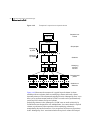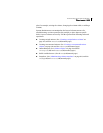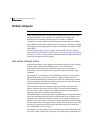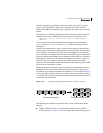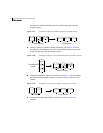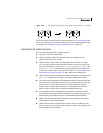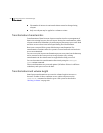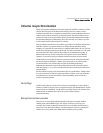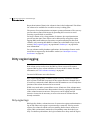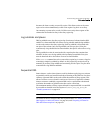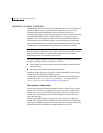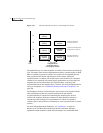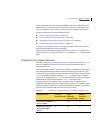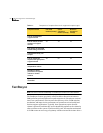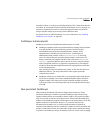
60 Understanding Veritas Volume Manager
Dirty region logging
Resynchronization of data in the volume is done in the background. This allows
the volume to be available for use while recovery is taking place.
The process of resynchronization can impact system performance. The recovery
process reduces some of this impact by spreading the recoveries to avoid
stressing a specific disk or controller.
For large volumes or for a large number of volumes, the resynchronization
process can take time. These effects can be addressed by using dirty region
logging (DRL) and FastResync (fast mirror resynchronization) for mirrored
volumes, or by ensuring that RAID-5 volumes have valid RAID-5 logs. See the
sections “Dirty region logging” on page 60 and “FastResync” on page 66 for
more information.
For raw volumes used by database applications, the SmartSync feature can be
used if this is supported by the database vendor (see “SmartSync recovery
accelerator” on page 62).
Dirty region logging
Note: If a version 20 DCO volume is associated with a volume, a portion of the
DCO volume can be used to store the DRL log. There is no need to create a
separate DRL log for a volume which has a version 20 DCO volume. For more
information, see “DCO volume versioning” on page 68.
You need a full license to use this feature.
Dirty region logging (DRL), if enabled, speeds recovery of mirrored volumes
after a system crash. DRL keeps track of the regions that have changed due to
I/O writes to a mirrored volume. DRL uses this information to recover only those
portions of the volume that need to be recovered.
If DRL is not used and a system failure occurs, all mirrors of the volumes must
be restored to a consistent state. Restoration is done by copying the full contents
of the volume between its mirrors. This process can be lengthy and I/O
intensive. It may also be necessary to recover the areas of volumes that are
already consistent.
Dirty region logs
DRL logically divides a volume into a set of consecutive regions, and maintains a
log on disk where each region is represented by a status bit. This log records
regions of a volume for which writes are pending. Before data is written to a
region, DRL synchronously marks the corresponding status bit in the log as
dirty. To enhance performance, the log bit remains set to dirty until the region



